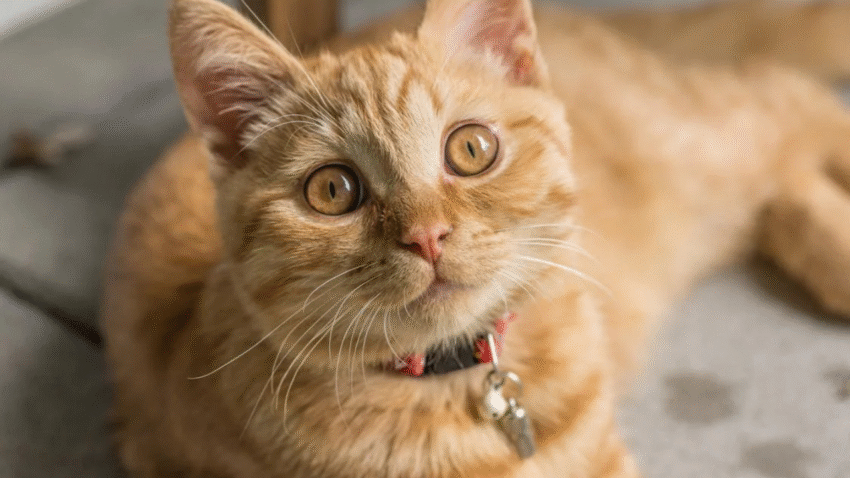Introduction
Has your cat come home with a small cut, scratch, or bump? Wondering how to treat minor injuries on your cat at home safely? While serious wounds should always be seen by a vet, many minor injuries can be managed effectively with the right knowledge and tools. In this guide, you’ll learn how to spot, clean, and care for common minor cat injuries at home—safely and stress-free.
Why Home Treatment for Minor Injuries Matters
Cats are curious and often get into little scuffles or accidents—whether it’s a scratch from another cat, a small cut from jumping, or a minor paw injury. Treating these issues quickly at home:
- Prevents infection
- Promotes faster healing
- Reduces your cat’s discomfort
- Avoids unnecessary vet visits for small wounds
However, it’s important to know the difference between what you can handle at home and what requires professional attention.
Step-by-Step Guide to Treating Minor Cat Injuries at Home
Step 1: Assess the Injury
Before you begin treatment:
- Gently restrain your cat in a towel or have someone help you hold them.
- Check the injured area closely.
- Look for:
- Small cuts or scratches (no deep bleeding)
- Superficial scrapes
- Minor swelling or bruises
- Broken nails
- Small hot spots or bald patches
DO NOT treat at home if:
- The wound is deep or bleeding heavily
- There’s pus or a foul smell
- Your cat is limping severely
- The injury is near the eyes, genitals, or joints
- Your cat is in visible pain or hiding excessively
In these cases, go to the vet immediately.
Step 2: Clean the Area Gently
- Wash your hands before handling the injury.
- Trim the fur around the wound with blunt scissors if needed, so you can see it clearly.
- Use a clean cloth or gauze pad soaked in warm water or saline solution to gently wipe the area.
Homemade saline solution: Mix 1 teaspoon of salt into 2 cups of warm boiled (and cooled) water.
- Dab gently—don’t scrub.
- Let the area air dry or pat it dry with a clean towel.
Step 3: Apply an Antiseptic (Cat-Safe Only)
- Use only pet-safe antiseptics like povidone-iodine (diluted) or chlorhexidine.
- Never use hydrogen peroxide, alcohol, or Neosporin unless your vet advises it—these can damage tissue or be toxic if ingested.
Apply the antiseptic with a cotton pad, and allow it to dry naturally.
Step 4: Prevent Licking and Scratching
- Cats tend to lick their wounds, which can reopen or infect them.
- Use a soft recovery collar or cat onesie to prevent access to the wound.
- Keep your cat calm and limit activity for a couple of days.
Step 5: Monitor the Wound
- Check the area twice daily for:
- Redness
- Swelling
- Discharge
- Odor
- If the wound looks worse after 48 hours or doesn’t improve in 3–5 days, contact your vet.
Common Mistakes to Avoid
1. Using Human Medications
Never use human antiseptics, ointments, or pain relievers without veterinary approval. Many are toxic to cats.
2. Skipping the Cleaning Step
Even minor wounds need to be cleaned properly to prevent infection. Dirt and bacteria can make things worse quickly.
3. Letting Your Cat Lick the Wound
Saliva introduces bacteria and prevents proper healing. Use a cone or recovery suit.
4. Applying Bandages Incorrectly
Cats usually don’t need bandages unless advised by a vet. If you wrap something too tightly, it can cut off circulation.
5. Ignoring Behavior Changes
If your cat starts hiding, stops eating, or shows aggression, the injury may be more serious than it appears. Get veterinary help.
Extra Tips & Recommendations
- Create a Cat First Aid Kit:
- Saline solution or pet-safe wound wash
- Gauze pads and clean cloths
- Blunt scissors
- Digital thermometer
- Cat-safe antiseptic (povidone-iodine or chlorhexidine)
- Recovery cone or soft collar
- Keep Your Cat Indoors While Healing: This prevents further injury or infection.
- Use Treats to Reduce Stress: Reward your cat with praise or treats after each care session.
If your cat frequently gets small injuries, consider trimming their nails regularly and checking your home or yard for sharp objects or hazards.
Conclusion
Treating minor injuries at home can be simple and effective when done correctly. By cleaning the wound, applying a pet-safe antiseptic, and preventing licking, you can help your cat heal faster and avoid complications. Just remember—when in doubt, always call your vet. Your calm, informed care makes all the difference in your cat’s recovery.
